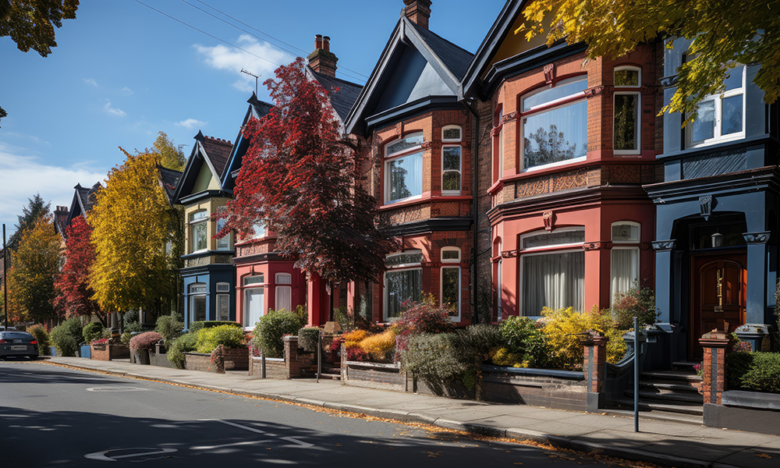
Common problems found in Victorian houses
Victorian houses come in all shapes and sizes, embracing classicism, Regency, Italianate, Gothic Revival, Queen Anne and Arts and Crafts styles. And, with more than 8 million such homes across the UK, chances are you may well end up viewing one when buying a home. Although they were largely built to a high standard and often offered attractive period features, Victorian homes are ageing, and with that comes a whole host of potential problems to be aware of.
Buying A Victorian house – problems you may encounter
Damp
Damp can be an issue for Victorian homes, whether rising, penetrating or condensation. While Victorian properties were generally built with good ventilation, often chimneys have been blocked and windows replaced with modern offerings that reduce air circulation. They also may not have the damp proofing associated with more modern homes. Some signs of dampness can be relatively easy to spot and control – simply opening windows and turning on the heating could be enough – but it’s important to be clear on what’s causing the problem. Rising damp can be more difficult and costly than dealing with condensation, for example.
Poor structural integrity
As Victorian homes could be close to 200 years old, the possibility of structural issues is much higher than in a more modern home. Again, there may be tell-tale signs of structural issues as you look around a property. Cracks in walls, uneven plaster and loose bricks can all be warning signs. As with any older property, subsidence can also be a concern. Checking that doors close properly, windows open, and that window sills aren’t sagging is a good first move.
Outdated electrical systems
Another potentially costly issue could be hidden in the electrics. While you may be able to see if the consumer unit needs replacing, you won’t necessarily know what’s lurking out of sight. Potentially out-of-date systems that can’t cope with modern demands and dangerous fuse boxes will need to be updated and comprehensive rewiring undertaken. If in doubt, speak to a qualified electrician.
Poor energy efficiency
Victorian homes can have a whole host of issues when it comes to energy efficiency. ONS data suggests that Victorian properties tend to be in Band D when it comes to energy efficiency, compared with homes built after 2012, which tend to be in Band B. The cost of upgrading a house in Band D to Band C has been estimated at over £6,000, so improvements aren’t cheap. Often, loft/roof insulation is minimal in Victorian homes, so investing here can make a big difference; updating windows and doors and filling gaps between floorboards are other effective improvements.
How to avoid buying a home with unforeseen issues
Despite these potential issues, Victorian homes still offer many benefits that appeal to homebuyers. High ceilings, well-proportioned rooms, thick walls, original features, and the fact that they continue to increase in value means they can still be a wise investment. There are, however, a few steps you can take to make sure you go into any purchase fully informed and aware of any potential issues.
Get a building survey
Top of the list is making sure you get a comprehensive building survey. Not only will this give you a detailed report of the property’s construction and condition, but it can also highlight where further investigation may be needed. A building survey, also known as a structural survey, will examine structural integrity, property build and construction materials in detail and highlight any repairs that have already been made or works that have been carried out. It will highlight both significant issues and wear and tear defects and explain the implications of these faults so you can be clear on what needs to be done to resolve any issues. The surveyor will also check for damp, condensation and insulation and assess roof spaces and the visible parts of services such as electricity. This means that the key areas of concern for Victorian properties will all be fully assessed and explained to you before you commit to buy. Remember, if you’re planning on renovating your Victorian home, a building survey is even more important so you can budget accurately and go into a project knowing the full extent of the work needed.
Electrical survey
If the survey does throw up any issues, such as electrical concerns, it can be wise to follow it up with an electrical survey. This will give you greater insight into whether the current system is outdated, if your cabling complies with current regulations and if there are any dangers you need to be aware of. It can also offer more practical advice, such as if rooms need more sockets and where these can be located.
Damp survey
Similarly, if the building survey highlights issues with damp, you may choose to get this investigated further. A specialist damp survey will not only determine the full extent of the problem but also the appropriate method of treatment. Armed with both of these surveys, you will also be in a strong position if you choose to renegotiate your offer due to unforeseen issues.
Check the EPC
When selling, the current owner must have an Energy Performance Certificate. Not only does this provide information about a property’s energy use and typical energy costs, but it also offers recommendations on how to reduce energy use and the costs associated with following those recommendations. With Victorian homes generally not performing well on EPCs, having an idea of where the property currently sits and the measures available to make improvements can be a huge help when planning budgets.
Novello offers timely, accurate and cost-effective building surveys carried out by expert RICS qualified surveyors. To find out more, contact us or arrange a free quotation now.

